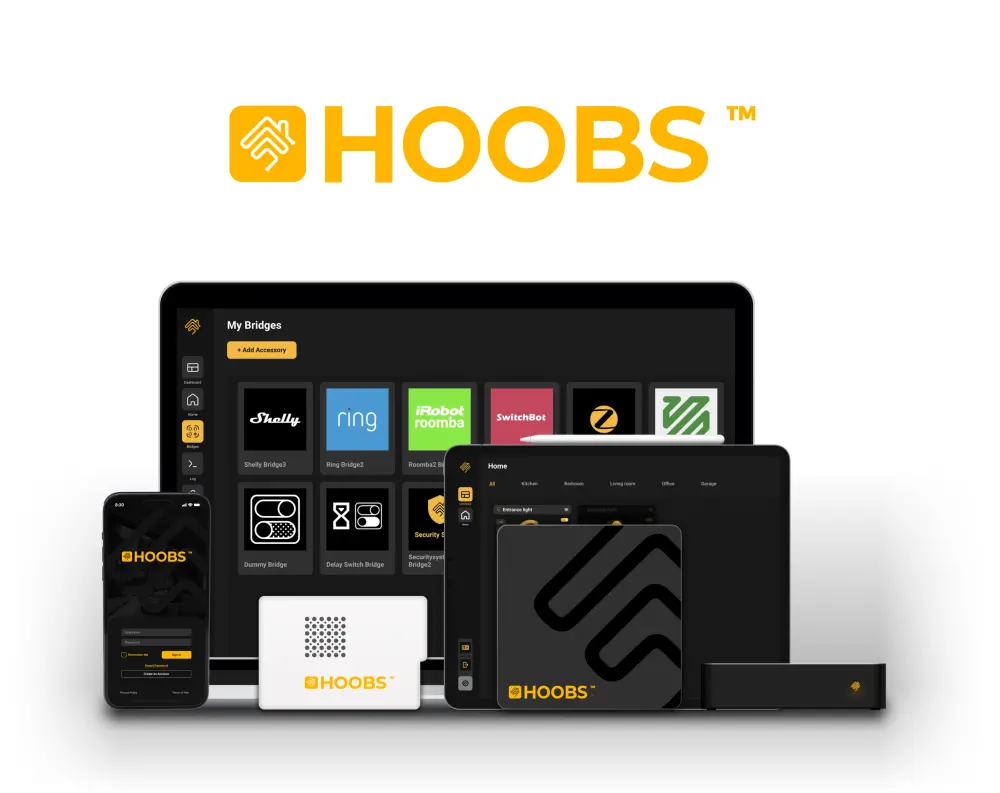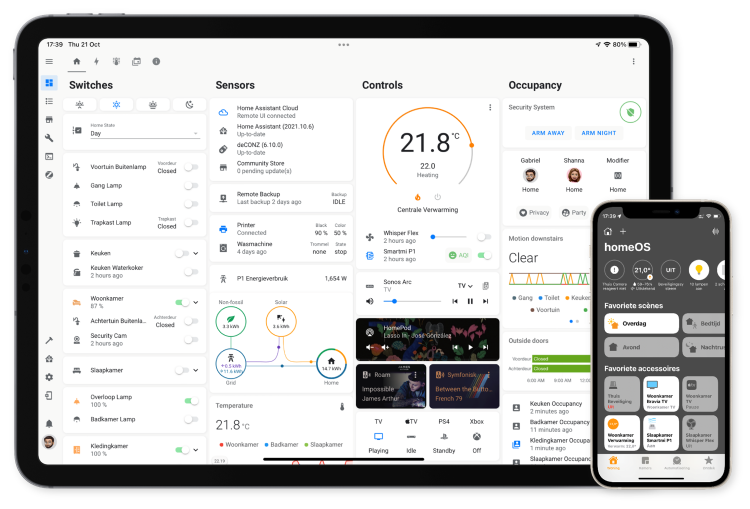In the age of smart homes, compatibility is king. With various brands offering diverse smart home products, it’s become increasingly crucial to have a platform that brings these disparate devices under one roof. Today, we’ll take a closer look at two popular solutions – HOOBS (Homebridge Out Of the Box System) and Home Assistant. Each platform has its strengths and specific use cases, and understanding these can help you choose the one that suits your needs the best.
HOOBS: Homebridge Made Easy
HOOBS is a system designed to simplify the process of using Homebridge, a lightweight NodeJS server that emulates the iOS HomeKit API. HOOBS lets you integrate non-HomeKit devices into your Apple HomeKit setup, which can be a game-changer for Apple enthusiasts seeking more device diversity.
The real beauty of HOOBS lies in its simplicity. Even if you’re not well-versed in coding or server management, HOOBS provides an easy-to-use interface that makes installing and managing Homebridge plugins a breeze. It also provides a straightforward way to control these plugins through the HOOBS dashboard.
If you’re an Apple user and want a simple solution to make non-HomeKit devices work with your existing HomeKit setup, HOOBS is a great choice. However, its Apple-centric nature might limit its appeal if you’re using other ecosystems like Google Home or Amazon Alexa.
Home Assistant: Comprehensive and Customizable
On the other hand, Home Assistant is an open-source home automation platform that focuses on privacy and local control. It supports a vast array of smart devices, providing you with comprehensive control of all your smart home devices, regardless of the brand.
What sets Home Assistant apart is its emphasis on customization and versatility. It allows for detailed automation rules, enabling your devices to operate based on specific triggers, conditions, and actions. Additionally, it’s compatible with multiple ecosystems, from Apple HomeKit to Google Home, and Amazon Alexa, making it a truly platform-agnostic solution.
The tradeoff with Home Assistant is that it’s more complex to set up and manage. While there’s a helpful community and plenty of resources available, getting the most out of Home Assistant often requires a comfort level with coding and scripting.
Conclusion: Choose What Suits Your Needs
In the end, the choice between HOOBS and Home Assistant boils down to your specific needs and technical comfort level. If you’re a fan of Apple’s HomeKit and want an easy way to integrate non-HomeKit devices, HOOBS is an excellent choice. However, if you’re looking for a platform-agnostic, highly customizable solution and aren’t afraid to get your hands dirty with some coding, Home Assistant might be the better fit.
Remember, both platforms are robust and well-supported, so you can’t go wrong either way. Take the time to evaluate your needs, assess the devices you currently own, and decide which solution offers the most benefits for your specific smart home setup.



